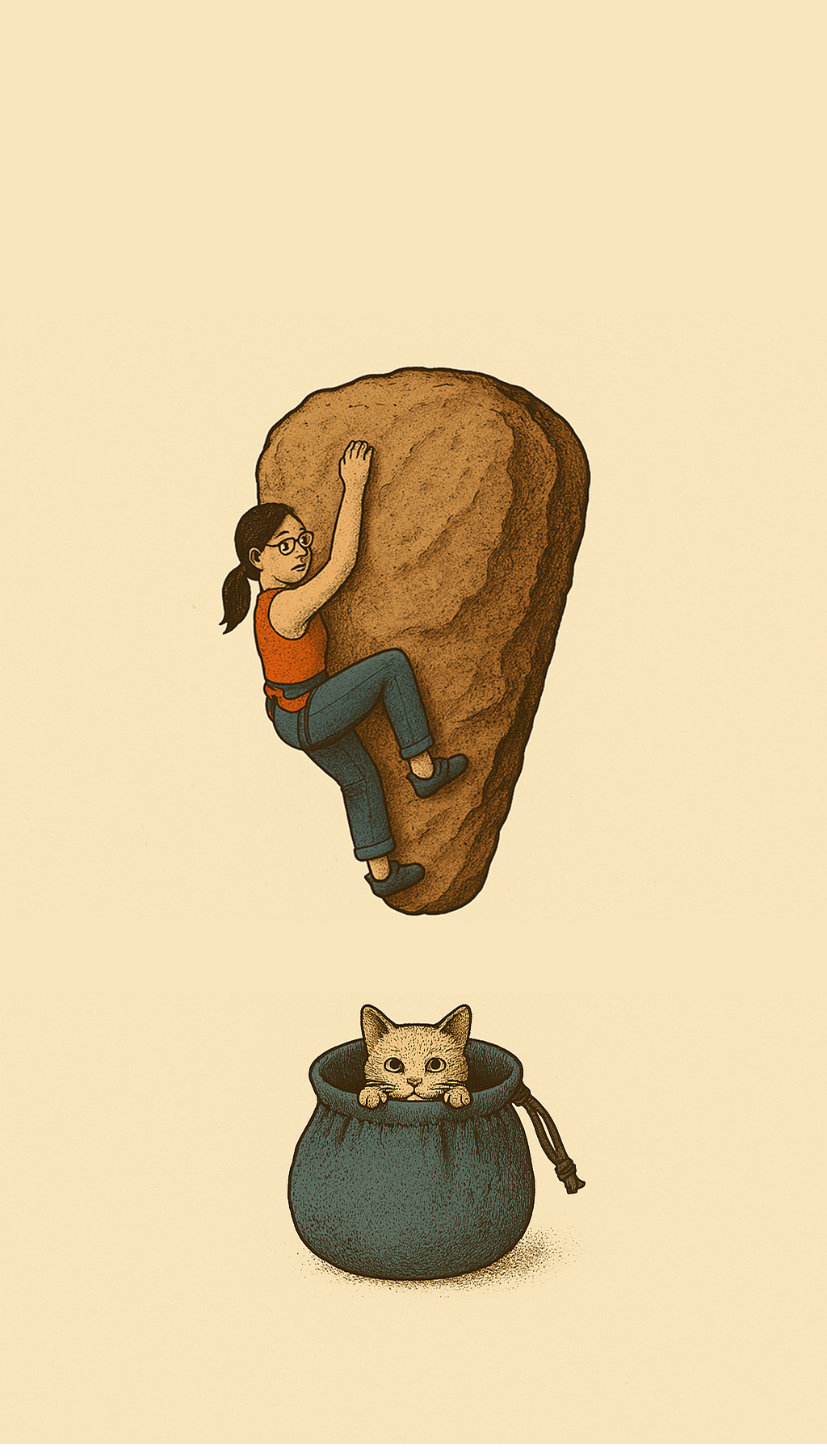Line Tracing on Glass: Teaching Your Body the 90 Degree Rule
Route-Reading as Embodied Literacy
In an indoor bouldering gym, route-reading means looking at a wall spattered with 3D forms—lines and shapes in space—and assigning them significance.
We interpret color groupings and spatial relationships. We scan for features: shadows, textures, convex or concave edges, bite depth, negative space. And from this visual data, we generate an internal blueprint—a feeling, a firing pattern, a body shape.
At its best, this leads to an inner “movement movie”—a kinesthetic preview of how we’ll attach, shift, compress, extend, and finally top out.
This embodied knowing is what allows us to climb, not just flail. It turns plastic blobs on wood into expressive movement. It deposits another pattern into our ever-expanding route-reading repertoire.
Off-Wall Training for On-Wall Vision
What if we could train this skill even when we’re not at the gym or crag?
What if we could develop route-reading through everyday objects, using tools like tactile feedback, spatial perspective, and body awareness?
The following is a simple, five-minute drill you can do while commuting, walking around your home, or waiting in a café. It strengthens your understanding of force direction—what many climbers know as the 90-degree rule—and deepens your visual-motor awareness.
Line Tracing on Glass: A Route-Reading Micro-Drill
Time: ~5 minutes
Goal: Strengthen your 3D spatial understanding of force application and body mapping.
You’ll Need:
A window or transparent surface directly in front of your torso (e.g. bus window, glass railing, train barrier)
A view of your environment through the glass
Step 1: Identify a Perpendicular Line
Look through the glass. Find an object in your environment with a clear horizontal or vertical line that forms a 90-degree angle relative to the plane of the glass in front of you.
This could be:
The edge of a nearby building
A railing or countertop across a room
A row of bus stop names on a display screen to your side
A bench, track, or curb viewed at an angle from a window
Important: the line should be to the side of your body so you perceive it with depth (3D), not flat-on.
Step 2: Trace It with Touch
Using a finger or toe, trace the line’s direction on the glass in front of you five times, back and forth, in a smooth rhythm.
Let your touch be:
Light but continuous
Fluid and connected
Coordinated with your breath, if you like
You’re now linking:
What you see (the line in space)
What you feel (the pressure on the glass)
Where you are (your body in space)
Step 3: Embody the 90-Degree Rule
Now repeat the tracing five more times.
But this time, stay consciously aware that:
You are tracing a surface parallel to yourself
But following the line of an object perpendicular to you in real 3D space
This contrast mirrors a critical skill in climbing: applying force perpendicularly into the wall or hold, even while your body moves in non-linear, rotating, or dynamic ways.
Why This Works
Practices like this deepen your ability to:
Coordinate vision with touch and proprioception
Predict movement patterns before engaging them
Feel spatial geometry without a wall or hold in front of you
They build the same internal maps that let you look at a climb and feel the beta before trying it.
Over time, this off-wall practice can refine your on-wall intuition—especially in bouldering, where fast problem-solving and bodily trust are crucial.
